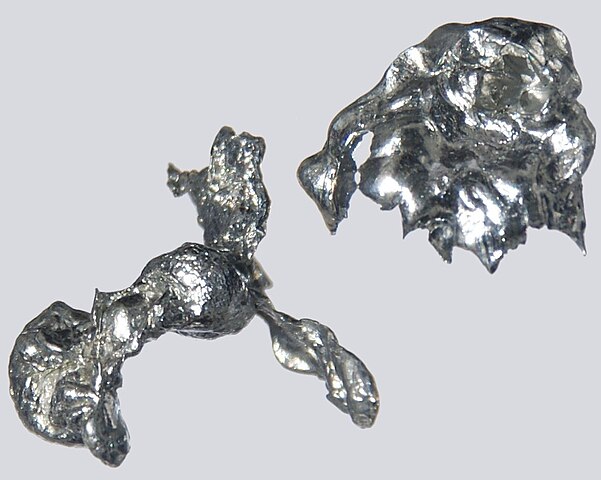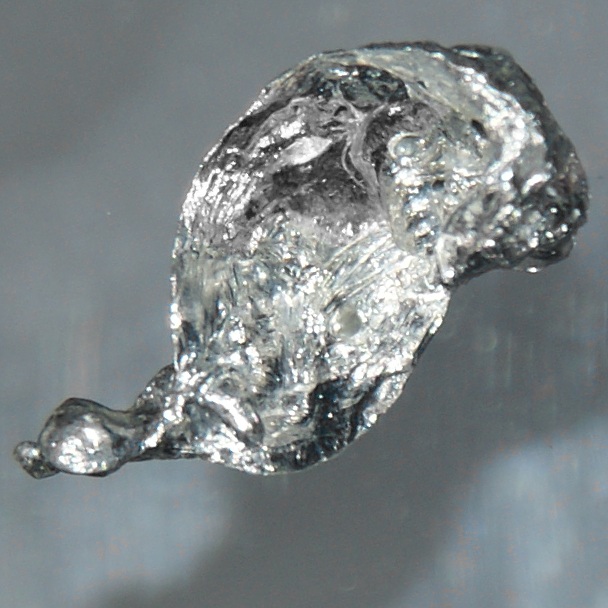Cadmium is a chemical element found in the periodic table with the atomic number 48. It is a naturally-occurring metal that is widely used for various applications across a range of industries.
Despite its numerous uses, cadmium can be hazardous to human health and the environment when released into the atmosphere. This article explores the essential facts about cadmium and provides helpful information about its uses, properties, health effects, and environmental impact.
Introduction
This article will begin by defining cadmium and detailing its history. We will then take a look at the properties and chemical composition of cadmium and explore the uses of the metal. We will then examine the health effects of cadmium, including acute and chronic effects, as well as its presence in food.
Next, we will discuss the environmental impact of cadmium, its sources of pollution, and the effects of cadmium on ecosystems and human health. Following this, we will consider the regulations and remediation methods for cadmium. Finally, we will conclude by summarizing the essential facts about cadmium.
We will start our discussion by looking at the definition of cadmium. Cadmium is a transition metal belonging to group 12 of the periodic table. It was discovered in 1817 by Friedrich Stromeyer, a German chemist. It is a bluish-white metal that is extremely malleable, ductile, and stable in a dry environment. The element is found in nature in trace amounts, and it is often used in combination with other elements such as arsenic, gold, and zinc.

Cadmium, a crystal bar
Cadmium is used extensively in a range of industries, including the production of batteries, electroplating, pigments, and semiconductors. It is also used in nuclear reactors, as well as in the manufacture of alloys and coatings. The metal’s ability to absorb neutrons makes it a valuable component in nuclear reactors.
Cadmium is also used in dental amalgams and is found in certain food items such as seafood, grains, and leafy vegetables. The metal can also be released into the atmosphere through the burning of fossil fuels and the use of cadmium-containing products such as paints and fertilizers.
The chemical composition of cadmium is composed of a single atom of cadmium in the center, surrounded by four electrons. The element has a melting point of 321.07°C (610.25°F) and a boiling point of 765°C (1409°F). It has an atomic weight of 112.41 and an atomic number of 48.
The physical characteristics of cadmium are largely dependent on its environment. In its pure form, it is a silvery-white metal with a shiny luster. The metal is malleable and ductile and has an atomic radius of 149 pm (picometers). It is also resistant to corrosion and oxidation and is stable in a dry environment.
The stability of cadmium is enhanced by its ability to form chemical bonds with other elements. This allows the metal to form compounds with a wide range of characteristics, including increased electrical conductivity. Cadmium also has a high affinity for oxygen, allowing it to form stable compounds with other elements.
We have now explored the definition, history, uses, properties, and chemical composition of cadmium. In the next section, we will take a look at the health effects of cadmium.
Properties of Cadmium
Cadmium is a soft, silver-white metal belonging to the family of transition metals. It has a relative atomic mass of 112.41 and is predominantly found in its +2 oxidation state. Its chemical and physical properties determine its use in a wide range of applications.
Chemical Composition:
Cadmium is a chemical element with the symbol Cd and atomic number 48. It is the 62nd most abundant element in the earth’s crust. It is generally found in several ores such as zinc, lead, and copper sulfides. The most common ore of cadmium is zinc sulfide, from which it is recovered as a by-product.
Physical Characteristics:
Cadmium is a soft, malleable, ductile metal. It has a bluish-white color and is very resistant to corrosion in moist air. It has a relatively low melting point of 321.07 °C (610.25 °F) and a high boiling point of 765 °C (1409 °F). Cadmium is diamagnetic, meaning it is repelled by both poles of a magnet.
Stability:
Cadmium is relatively stable in air at room temperature. Its stability increases with decreasing temperature and a film of oxide is formed on its surface when it is exposed to air. This film is highly resistant to further oxidation in air, making cadmium corrosion-resistant. It also remains stable in water unless exposed to organic acids or chlorine.
Cadmium is a relatively stable element but its compounds are highly toxic and can be dangerous to humans and the environment. It is important to be aware of the properties of cadmium to ensure its safe handling and storage. This is especially important for those industries using cadmium in their products or processes, as well as for researchers working on its applications.
Health Effects of Cadmium
Cadmium is a highly toxic element and exposure to it can have serious health impacts. Its toxicity is based on how much cadmium is in the air, soil, or water, and how quickly and for how long it is exposed to humans and other organisms. Cadmium can enter the body through inhalation, ingestion, and skin contact.
Acute Effects:
Acute cadmium poisoning is rare and usually occurs through inhalation of high levels of cadmium dust or fumes. This can cause vomiting, abdominal pain, headaches, and even death if not treated properly. Acute exposures to cadmium can also cause skin irritation, dermatitis, and respiratory irritation.
Chronic Effects:
Chronic exposure to cadmium has been linked to kidney disease, bone loss, lung damage, and cancer. Long-term exposure to cadmium can cause kidney damage or renal failure. It can also cause bone loss, because cadmium can substitute for calcium in bones and teeth. Inhalation of cadmium can also cause respiratory damage such as coughing, wheezing, and shortness of breath.
Cadmium in Food:
Cadmium can also be found in certain foods. For example, it can be found in some vegetables, grains, and shellfish. Cadmium accumulates in the body over time, so it is important to limit or avoid food sources that contain high levels of cadmium.
It is important to be aware of the health effects of cadmium in order to protect yourself and your family. Limiting exposure to cadmium is essential to minimizing its potential health impacts. It is also important to be aware of regulations that address cadmium exposure.
Environmental Impact of Cadmium
The use of cadmium has had far-reaching and devastating environmental effects over the years. Cadmium is a heavy metal that is highly toxic to all forms of life, making it of particular concern when it is deposited into the environment. The sources of cadmium pollution are both natural and man-made, and the environmental damage caused by cadmium is both acute and chronic.
Sources of Cadmium Pollution:
Cadmium can be released into the environment through natural processes such as weathering of rocks, volcanic eruptions, and forest fires. In addition, cadmium is released into the environment through human activities such as burning coal, metal smelting, mining, and industrial production. These activities can release a large amount of cadmium into the air, water, and soil. In addition, cadmium can be released from landfills, incinerators, and wastewater treatment plants.
Effects on Ecosystems:
The effects of cadmium on ecosystems can be quite devastating. Cadmium has been found to be highly toxic to aquatic organisms, and can cause significant changes in their behavior. It has been linked to birth defects, reproductive failure, and developmental abnormalities in fish and other aquatic species. In addition, cadmium can accumulate in the food chain, leading to potential health risks for humans and other animals.
Effects on Human Health:
Cadmium is a heavy metal that can be toxic to humans. Acute exposure to cadmium can cause symptoms such as nausea, vomiting, abdominal pain, and respiratory distress. Chronic exposure to cadmium can lead to kidney failure, bone defects, and cancer. In addition, inhalation of cadmium can lead to respiratory problems such as bronchitis and asthma. Cadmium has also been linked to adverse effects on the immune system, reproductive system, and nervous system.
Cadmium in Food:
Cadmium can also be found in food. Plants can absorb cadmium from the soil and accumulate it in their tissues. Foods such as root vegetables, grains, and shellfish can contain high levels of cadmium. Long-term exposure to cadmium in food can lead to health problems such as kidney, liver, and bone damage.
The environmental impact of cadmium is significant. It is important to take steps to reduce the amount of cadmium released into the environment and to monitor cadmium levels in the food supply. In addition, regulations should be put in place to ensure that the use of cadmium is limited and its effects on the environment are minimized.

Regulations of Cadmium
The use, production, and disposal of cadmium is regulated by international, national, and regional laws and regulations. These regulations are in place to ensure that the environment and humans are not exposed to higher than acceptable levels of cadmium.
International Regulations:
The international regulations that govern the use of cadmium are primarily set by the United Nations Economic Commission for Europe (UNECE). The UNECE has established standards for the use, storage and transport of cadmium and its compounds that are binding across Europe. The standards are based on the requirements of the European Union (EU) and are implemented by its member states.
The World Health Organization (WHO) also recommends maximum levels of cadmium in drinking water. The WHO’s Guidelines for Drinking Water Quality outline the maximum amount of cadmium that can be present in drinking water without causing health risks.
National Regulations:
National governments also regulate the use of cadmium in their countries. In the United States, the Environmental Protection Agency (EPA) sets and enforces environmental standards for cadmium. The EPA also regulates the disposal of cadmium-containing waste and oversees cleanup of contaminated sites.
In the United Kingdom, the Health and Safety Executive (HSE) is responsible for the regulation of cadmium in workplace settings. The HSE sets tolerable daily intakes and maximum workplace exposure limits for cadmium and its compounds.
Regional Regulations:
As well as these national and international regulations, some countries have regional regulations that are more stringent than the global standards. In the European Union, for example, the regulations are much stricter than in other parts of the world. Member states are required to enforce EU regulations, which set maximum levels of cadmium in food, drinking water, and consumer products.
The EU also regulates the use of cadmium in industrial processes, including the recycling of cadmium-containing products. Member states are required to implement regulations that restrict the use of cadmium and its compounds and ensure that they are stored and disposed of safely.
In Australia, the National Pollutant Inventory (NPI) regulates the use of cadmium and its compounds. The NPI is a government body that monitors discharges of cadmium from industrial activities and sets maximum limits for cadmium in the environment.
These regulations are in place to ensure that the use, storage, and disposal of cadmium is done safely and responsibly. They are essential for protecting the environment and human health from the harmful effects of cadmium.
Methods for Remediation of Cadmium
Cadmium is a dangerous substance and its presence in soil, air, and water can cause serious health and environmental hazards. Fortunately, there are various methods for remediation of cadmium that can be used to reduce the level of contamination.
There are three main approaches for remediation of cadmium: physical and chemical methods, biological methods, and other remediation strategies.
Physical and Chemical Methods:
Physical and chemical methods of remediation involve the use of physical or chemical processes to remove cadmium from the environment. These methods can include dredging or excavating contaminated sediments, flushing out soils using water, and immobilizing cadmium by treating them with substances that form insoluble complexes.
Biological Methods:
Biological methods of remediation involve the use of organisms such as plants, bacteria, and fungi to remove cadmium from the environment. For example, plants can be used to absorb cadmium from soil and water, while bacteria and fungi can be used to break down cadmium-containing compounds into elements that are less toxic or even non-toxic.
Other Remediation Strategies:
Other remediation strategies for cadmium include containment and dilution. Containment involves preventing the spread of cadmium by creating a physical barrier between the contaminated area and other parts of the environment. Dilution involves adding uncontaminated materials to the contaminated environment in order to reduce the level of contamination.
In addition to the above-mentioned methods, isolation and in-situ methods can also be used for remediation of cadmium. Isolation involves removing the contaminated material from the environment, while in-situ methods involve treating the contaminated material in place without removing it.
Remediation of cadmium is an important step in protecting human health and the environment. By using the various methods of remediation mentioned above, cadmium contamination can be reduced to levels that are safe for people and the environment.

SONY DSC
Information
| Cadmium | |||||||||||||||||||||||||||||||||||||||||||||||||||||||||||||||||||||||||
|---|---|---|---|---|---|---|---|---|---|---|---|---|---|---|---|---|---|---|---|---|---|---|---|---|---|---|---|---|---|---|---|---|---|---|---|---|---|---|---|---|---|---|---|---|---|---|---|---|---|---|---|---|---|---|---|---|---|---|---|---|---|---|---|---|---|---|---|---|---|---|---|---|---|
| Pronunciation | KAD-mee-əm | ||||||||||||||||||||||||||||||||||||||||||||||||||||||||||||||||||||||||
| Appearance | silvery bluish-gray metallic | ||||||||||||||||||||||||||||||||||||||||||||||||||||||||||||||||||||||||
| Standard atomic weight Ar°(Cd) | |||||||||||||||||||||||||||||||||||||||||||||||||||||||||||||||||||||||||
|
|||||||||||||||||||||||||||||||||||||||||||||||||||||||||||||||||||||||||
| Cadmium in the periodic table | |||||||||||||||||||||||||||||||||||||||||||||||||||||||||||||||||||||||||
| Atomic number (Z) | 48 | ||||||||||||||||||||||||||||||||||||||||||||||||||||||||||||||||||||||||
| Group | group 12 | ||||||||||||||||||||||||||||||||||||||||||||||||||||||||||||||||||||||||
| Period | period 5 | ||||||||||||||||||||||||||||||||||||||||||||||||||||||||||||||||||||||||
| Block | d-block | ||||||||||||||||||||||||||||||||||||||||||||||||||||||||||||||||||||||||
| Electron configuration | [Kr] 4d10 5s2 | ||||||||||||||||||||||||||||||||||||||||||||||||||||||||||||||||||||||||
| Electrons per shell | 2, 8, 18, 18, 2 | ||||||||||||||||||||||||||||||||||||||||||||||||||||||||||||||||||||||||
| Physical properties | |||||||||||||||||||||||||||||||||||||||||||||||||||||||||||||||||||||||||
| Phase at STP | solid | ||||||||||||||||||||||||||||||||||||||||||||||||||||||||||||||||||||||||
| Melting point | 594.22 K (321.07 °C, 609.93 °F) | ||||||||||||||||||||||||||||||||||||||||||||||||||||||||||||||||||||||||
| Boiling point | 1040 K (767 °C, 1413 °F) | ||||||||||||||||||||||||||||||||||||||||||||||||||||||||||||||||||||||||
| Density (near r.t.) | 8.65 g/cm3 | ||||||||||||||||||||||||||||||||||||||||||||||||||||||||||||||||||||||||
| when liquid (at m.p.) | 7.996 g/cm3 | ||||||||||||||||||||||||||||||||||||||||||||||||||||||||||||||||||||||||
| Heat of fusion | 6.21 kJ/mol | ||||||||||||||||||||||||||||||||||||||||||||||||||||||||||||||||||||||||
| Heat of vaporization | 99.87 kJ/mol | ||||||||||||||||||||||||||||||||||||||||||||||||||||||||||||||||||||||||
| Molar heat capacity | 26.020 J/(mol·K) | ||||||||||||||||||||||||||||||||||||||||||||||||||||||||||||||||||||||||
Vapor pressure
|
|||||||||||||||||||||||||||||||||||||||||||||||||||||||||||||||||||||||||
| Atomic properties | |||||||||||||||||||||||||||||||||||||||||||||||||||||||||||||||||||||||||
| Oxidation states | −2, +1, +2 (a mildly basic oxide) | ||||||||||||||||||||||||||||||||||||||||||||||||||||||||||||||||||||||||
| Electronegativity | Pauling scale: 1.69 | ||||||||||||||||||||||||||||||||||||||||||||||||||||||||||||||||||||||||
| Ionization energies |
|
||||||||||||||||||||||||||||||||||||||||||||||||||||||||||||||||||||||||
| Atomic radius | empirical: 151 pm | ||||||||||||||||||||||||||||||||||||||||||||||||||||||||||||||||||||||||
| Covalent radius | 144±9 pm | ||||||||||||||||||||||||||||||||||||||||||||||||||||||||||||||||||||||||
| Van der Waals radius | 158 pm | ||||||||||||||||||||||||||||||||||||||||||||||||||||||||||||||||||||||||
| Other properties | |||||||||||||||||||||||||||||||||||||||||||||||||||||||||||||||||||||||||
| Natural occurrence | primordial | ||||||||||||||||||||||||||||||||||||||||||||||||||||||||||||||||||||||||
| Crystal structure | hexagonal close-packed (hcp) | ||||||||||||||||||||||||||||||||||||||||||||||||||||||||||||||||||||||||
| Speed of sound thin rod | 2310 m/s (at 20 °C) | ||||||||||||||||||||||||||||||||||||||||||||||||||||||||||||||||||||||||
| Thermal expansion | 30.8 µm/(m⋅K) (at 25 °C) | ||||||||||||||||||||||||||||||||||||||||||||||||||||||||||||||||||||||||
| Thermal conductivity | 96.6 W/(m⋅K) | ||||||||||||||||||||||||||||||||||||||||||||||||||||||||||||||||||||||||
| Electrical resistivity | 72.7 nΩ⋅m (at 22 °C) | ||||||||||||||||||||||||||||||||||||||||||||||||||||||||||||||||||||||||
| Magnetic ordering | diamagnetic | ||||||||||||||||||||||||||||||||||||||||||||||||||||||||||||||||||||||||
| Molar magnetic susceptibility | −19.8×10−6 cm3/mol | ||||||||||||||||||||||||||||||||||||||||||||||||||||||||||||||||||||||||
| Young’s modulus | 50 GPa | ||||||||||||||||||||||||||||||||||||||||||||||||||||||||||||||||||||||||
| Shear modulus | 19 GPa | ||||||||||||||||||||||||||||||||||||||||||||||||||||||||||||||||||||||||
| Bulk modulus | 42 GPa | ||||||||||||||||||||||||||||||||||||||||||||||||||||||||||||||||||||||||
| Poisson ratio | 0.30 | ||||||||||||||||||||||||||||||||||||||||||||||||||||||||||||||||||||||||
| Mohs hardness | 2.0 | ||||||||||||||||||||||||||||||||||||||||||||||||||||||||||||||||||||||||
| Brinell hardness | 203–220 MPa | ||||||||||||||||||||||||||||||||||||||||||||||||||||||||||||||||||||||||
| CAS Number | 7440-43-9 | ||||||||||||||||||||||||||||||||||||||||||||||||||||||||||||||||||||||||
| History | |||||||||||||||||||||||||||||||||||||||||||||||||||||||||||||||||||||||||
| Discovery and first isolation | Karl Samuel Leberecht Hermann and Friedrich Stromeyer (1817) | ||||||||||||||||||||||||||||||||||||||||||||||||||||||||||||||||||||||||
| Named by | Friedrich Stromeyer (1817) | ||||||||||||||||||||||||||||||||||||||||||||||||||||||||||||||||||||||||
|
|||||||||||||||||||||||||||||||||||||||||||||||||||||||||||||||||||||||||
Facts
Cadmium is a chemical element with the symbol Cd
Cadmium has the atomic number 48
Cadmium is a soft, malleable, ductile, silvery-white divalent metal
The average concentration of cadmium in Earth’s crust is between 0.1 and 0.5 parts per million
It was discovered in 1817 simultaneously by Stromeyer and Hermann, as an impurity in zinc carbonate
Cadmium was used for a long time as a corrosion-resistant plating on steel
Cadmium use is generally decreasing because it is toxic
Naturally occurring cadmium is composed of eight isotopes
The two natural radioactive isotopes are 113Cd and 116Cd
Cadmium was named after the Greek mythological character, Cadmus, the founder of Thebes
the main source of cadmium is the refining of zinc.
A typical one ton sample of zinc led to the production of only 6.5 pounds of cadmium.
the European Union banned cadmium in electronics
Although cadmium has no known biological function in higher organisms, a cadmium-dependent carbonic anhydrase has been found in marine diatoms.
One of its few new uses is in cadmium telluride solar panels.
Cadmium as a metal is very rare but is found in one place in Russia.
In the 1970s, the output of cadmium was 6.5 pounds (2.9 kg) per ton of zinc
China was the top producer of cadmium with almost one-sixth of the world’s production, closely followed by South Korea and Japan
Cadmium electroplating, consuming 6% of the global production, is used in the aircraft industry to reduce corrosion of steel components
Cadmium is a common component of electric batteries, pigments,coatings,and electroplating
Cadmium is used in the control rods of nuclear reactors
Cadmium has no known function in higher organisms and is considered toxic
